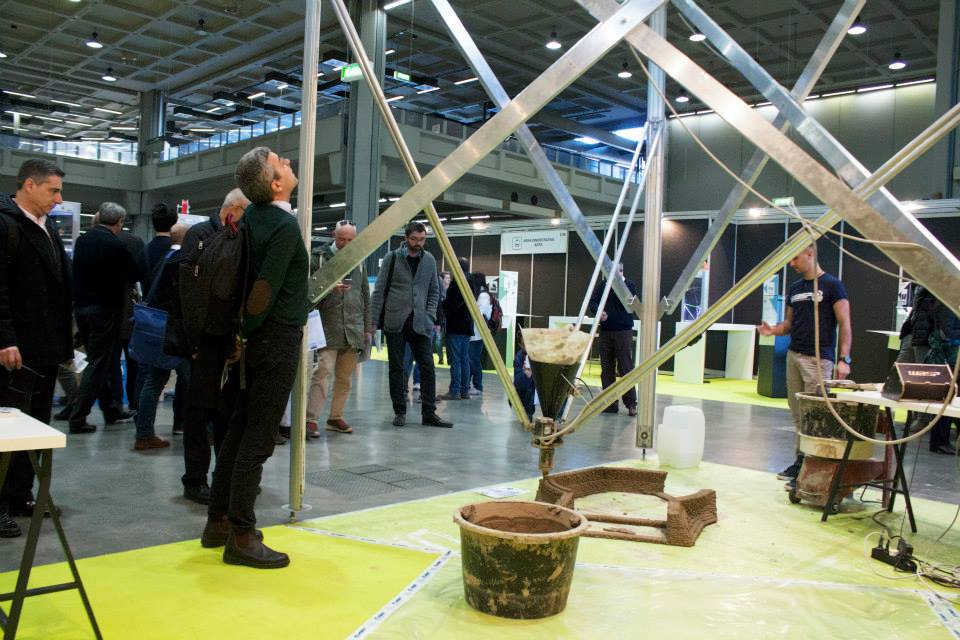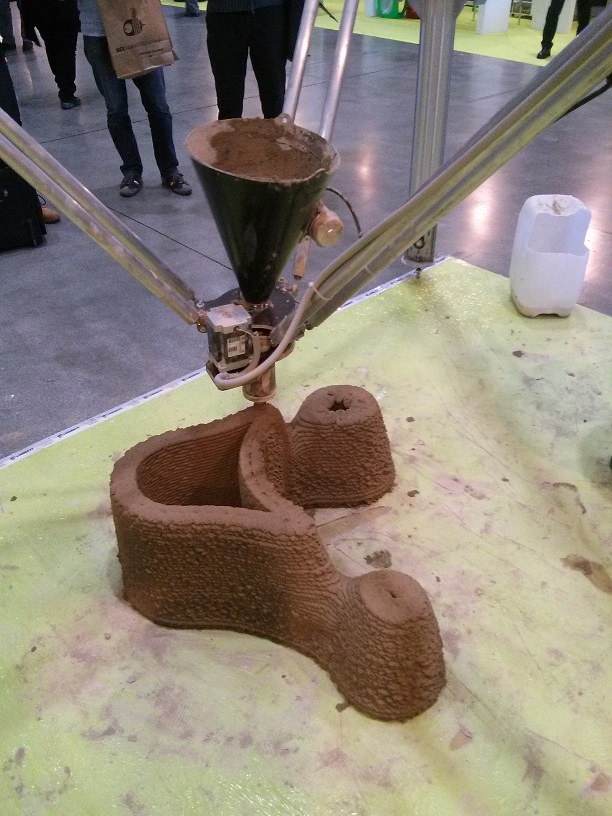Learning from the Wasp
Animals teach us: every wasted energy goes recovered procuring food, stocking up when necessary. The innovation that is the decisive step of our journey towards the WASP GigaDelta 12 meters high, that is, toward the printer which will be able to build houses of clay, is inspired by this concept. At the end the solution of the problem that has haunted us for years was just in our name. In nature. It was the potter wasp which have inspired us.

The new extruder with rotating nozzle
Compared to the model presented at the Maker Faire in Rome in 2014, what characterizes the evolution decisive is the new extruder. Control movement in 3D printing is essential, but this was not possible with the old extruder peristaltic pump. That’s why we have completely redesigned it following an auger concept. Now we have an extruder that is able to handle even the retraction, that is, can interrupt the work and withdraw the extruded material.
In short, we have moved from the continue extrusion to a precise control of flows, the ability to pause and resume the supply in a micrometer way. The new extruder can be quickly assembled and disassembled, it automatically cleans, consumes very little and has a constant control at all speeds. Moreover, thanks to rotating nozzle the material is not only extruded, but also kneaded in output, so as to allow a correct adhesion of the layers on each other.

If we look back and think of our path, from the beginning, the biggest obstacle to the realization of GigaDelta was right the extrusion material. We had to figure out not only how to extrude, but also how to charge and keep the system operating. It has been a continuous research and we tried so many solutions. At the end we got back to the potter wasp that deposits material and goes to procure it when it is finished. With the same system, our machine minimizes the energy consumption. Now we can easily print out and move to the side every time we need to load material. There is no longer the work given by the displacement in height and energy saving is obvious: pushing clay in the tubes takes several kilowatts, letting it fall controlled with a screw only takes a few tens of watts.
All of these features are contained in our new extruder and characterize the printer. They are already in effect technical solutions ready to be replicated on a larger scale. Now we can say we have made a machine that gives shape to objects without requiring energy and in our opinion, it is a revolution, not only in terms of construction. Let’s take, for example, the possibility of building not only houses, but animal shelters, roof gardens. It completely changes the approach and now the center of the project is the energy.
[vsw id=”vixPA7GGQpM” source=”youtube” width=”425″ height=”344″ autoplay=”no”]
Upcoming developments
What further developments will have the rotating nozzle? We do not know. To us this system was used to mix the material better and keep clean the nozzle. It is from the necessity that we started to get the final result. The strength of this technology with respect to all those developed so far is that it is a continuous supply system, namely, it is supplied while the machine works. Who lived all the various technological steps in the years, can easily understand the scope of this evolution. Even the nozzle may have important content in the construction industry. It’s a kind of concrete mixer with a controlled operation. Further applications are, as always, to discover. It’s a world where often you switch from one technology to another. Here you should not be dogmatic. Humility is necessary to understand which solution is good and what is not. It should be ready to change direction every day, sometimes even to throw away everything that has been done up to that point.
Many people ask us when we will build the first house. Now there are all the conditions for the decisive leap. We think we have done our part, that is we think that we designed (and s the construct) a printer capable of doing the house. The conditions are ready. Then other factors come into play, we need other parties: the territories, municipalities, institutions. Sardegna Ricerche and the Municipality of Iglesias expressed interest in the project. It’s sure that to have a teamwork we need a team. Other teams will begin to use the machine, we will continue to do research to improve the system. It is our extraordinary, fascinating “condemnation”.

